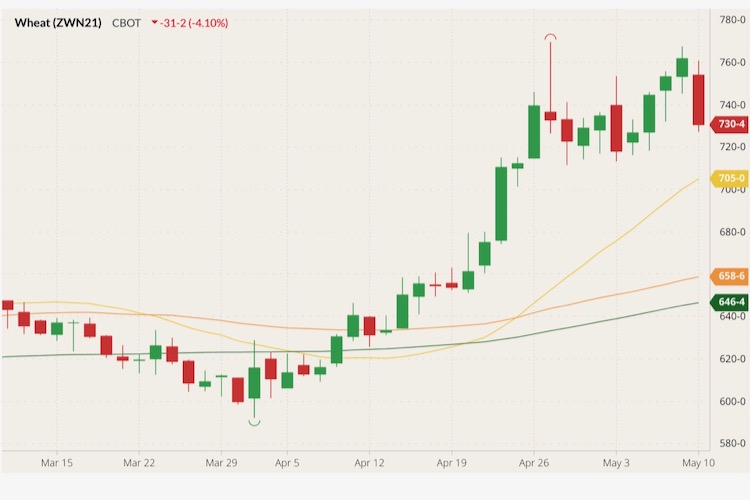Chicago | Reuters — Chicago corn futures fell on Monday, pausing after rallying to eight-year highs last week, with traders focusing on the U.S. Department of Agriculture’s upcoming world supply-demand (WASDE) report for new price direction.
Wheat dipped, supported by beneficial rains across the U.S. Great Plains, while soybeans traded mixed on continued tight supplies.
Chicago Board of Trade most active corn fell 20-1/2 cents, to $7.11-3/4 per bushel (all figures US$).
Wheat fell 31-1/4 cents, to $7.30-1/2 per bushel. Soybeans lost 2-1/2 cents, to $15.87-1/2 per bushel.
Read Also

Alberta crop conditions improve: report
Varied precipitation and warm temperatures were generally beneficial for crop development across Alberta during the week ended July 8, according to the latest provincial crop report released July 11.
After CBOT corn reached its highest since March 2013 on Friday, the market stepped back, with rainfall across the U.S. Midwest and strong planting progress adding pressure, traders said.
“Overall, planting progress is pretty decent,” said Tom Fritz, commodity broker at EFG Group, noting that heavy rainfall in the eastern cornbelt could slow planting. “I don’t see any sustained problems.”
U.S. farmers planted 67 per cent of planned corn acres and 42 per cent of planned soybeans acres, as of Sunday, in line with analyst expectations.
USDA is set to issue its first supply and demand estimates for the 2021-22 season on Wednesday, likely predicting continued tightness in U.S. soybean ending stocks.
“All eyes are on how tight the carryout is,” said Chuck Shelby, president of Risk Management Commodities. “Going forward, we’re going to need a record yield, just to maintain these levels.”
China’s corn purchases have underpinned prices recently, with importers buying another 1.02 million tonnes of new-crop corn on Monday, while canceling 280,000 tonnes of old-crop purchases, USDA said.
Pressure in the wheat market was driven by beneficial rainfall across the U.S. Great Plains and Europe.
“Conditions of the winter wheat crop are good. I think the spring wheat areas are going to be improving,” Fritz said. “We’re going to have some decent wheat crops this year.”
Winter wheat was rated 49 per cent good-to-excellent, according to USDA.
— Reporting for Reuters by Christopher Walljasper in Chicago; additional reporting by Michael Hogan and Naveen Thukral.















